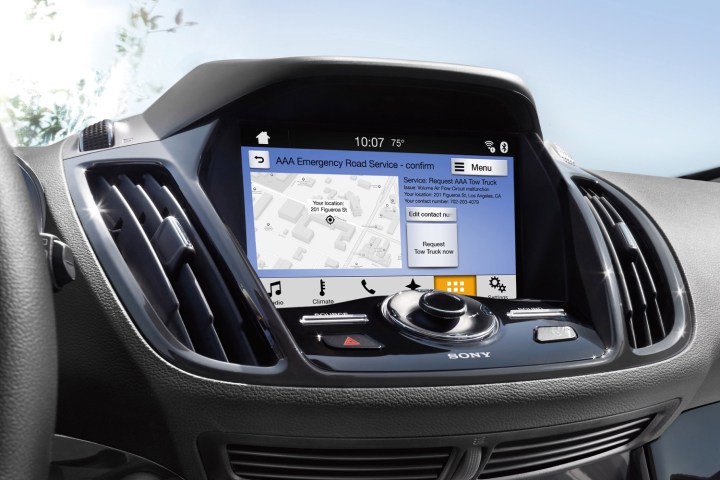
SDL is essentially an open-source version of the Sync AppLink platform used in current Ford vehicles. It allows in-car infotainment systems to connect with smartphone apps. In addition to Toyota, Blackberry’s QNX subsidiary (which provides the software for Ford’s Sync 3 system) and UIEvolution also confirmed that they will integrate SDL into future products. PSA Peugeot Citroën, Honda, Mazda, and Subaru are also looking at the system, Ford says.
Ford hopes that getting multiple carmakers and suppliers onboard will lead to the adoption of SDL as an industry standard for smartphone app integration. It believes this will help developers by allowing them to get car-based versions of their apps to larger numbers of consumers more quickly, and will benefit those consumers by allowing for greater resources to be put into security measures.
It’s taken for granted at this point that people will use their phones while driving, despite the inherent safety risk. Carmakers are working to develop systems that integrate smartphone functions with automotive infotainment systems as seamless as possible, essentially turning cars into extensions of phones. It’s hoped that using a car’s built in controls for smartphone functions will prove safer, while still letting drivers access relevant content that could prove useful behind the wheel.
Ford claims companies that sign on for SDL will still have the “freedom to differentiate their individual brands.” That’s particularly important for carmakers, which strive to develop and maintain individual brand identities even among firms that are part of the same company. This individualization isn’t something that’s offered by Apple CarPlay and Android Auto, which standardize an Apple or Android-specific interface for users across all car brands.
There is no indication when Toyota or other carmakers will begin selling SDL-equipped vehicles, but Ford expects sales of its own AppLink version to grow significantly. It expects 28 million vehicles sold between now and 2020 to have the system.


